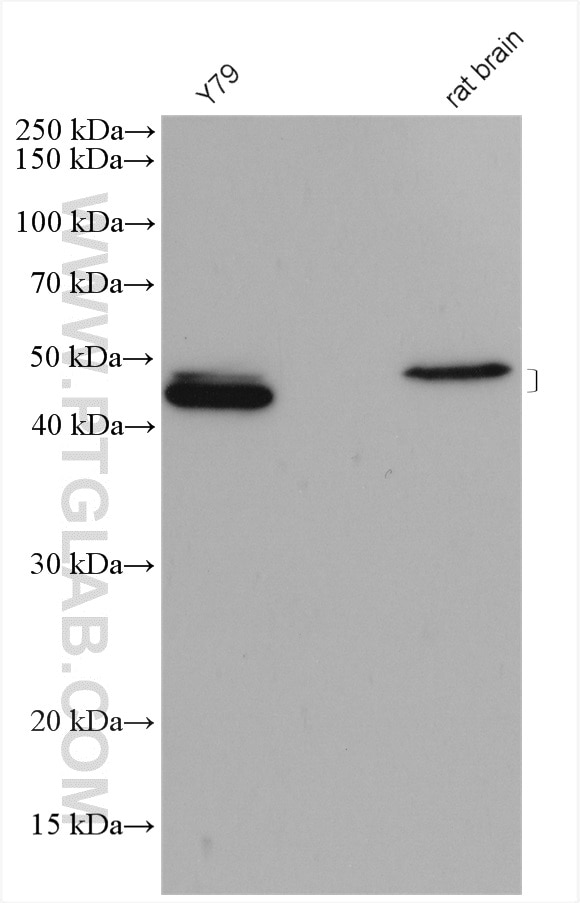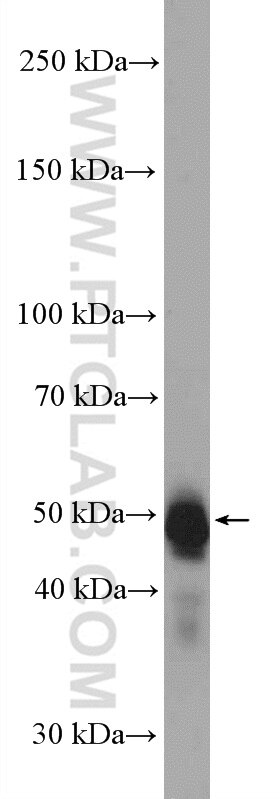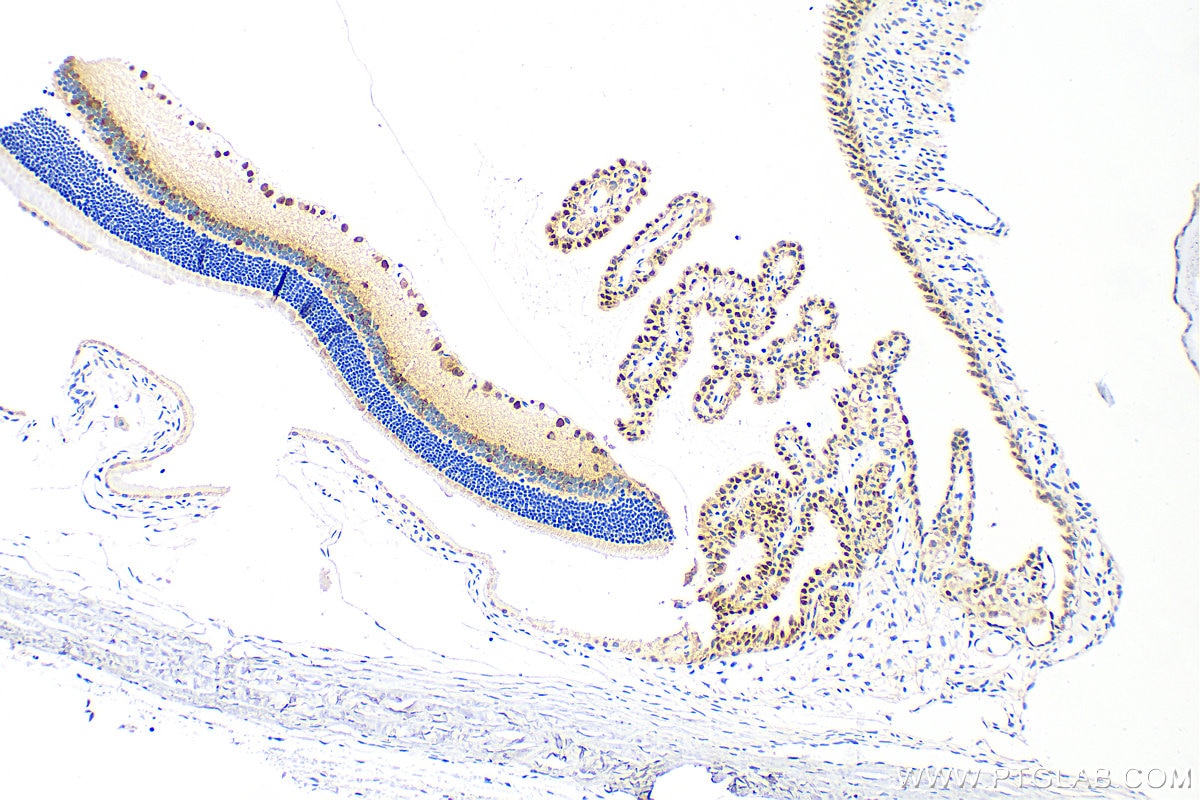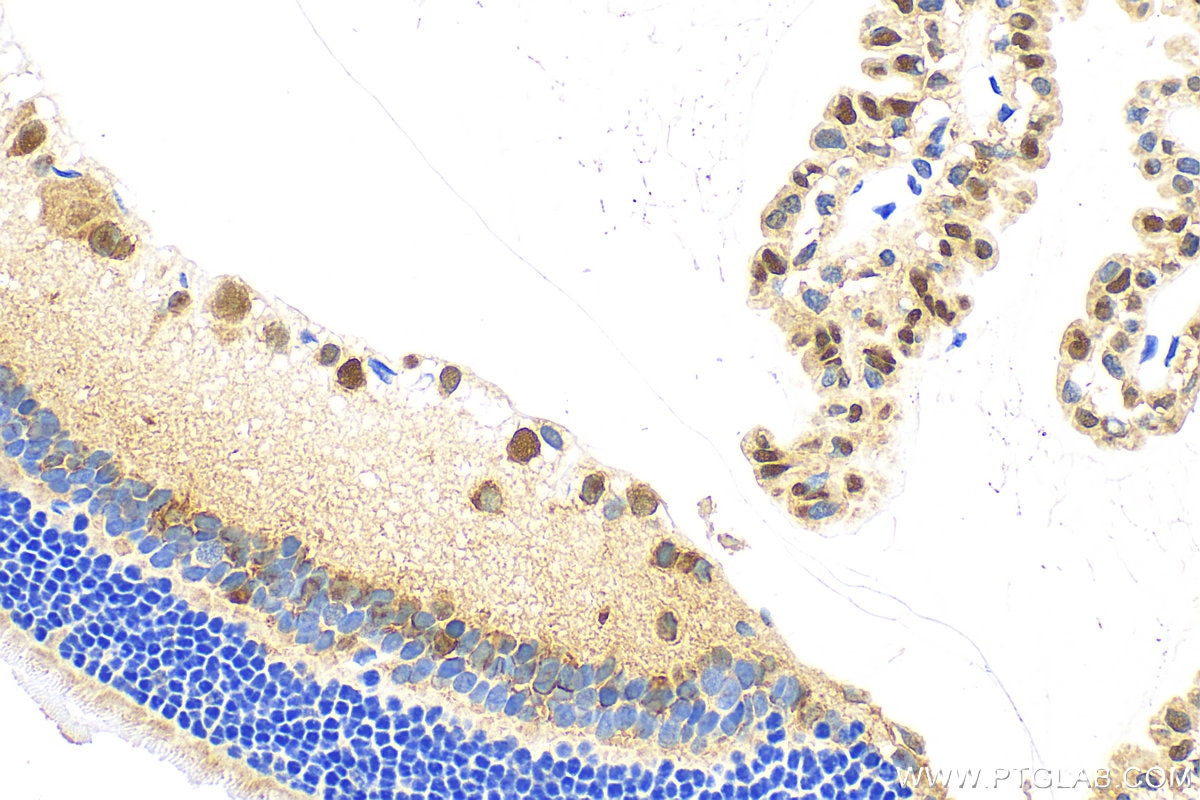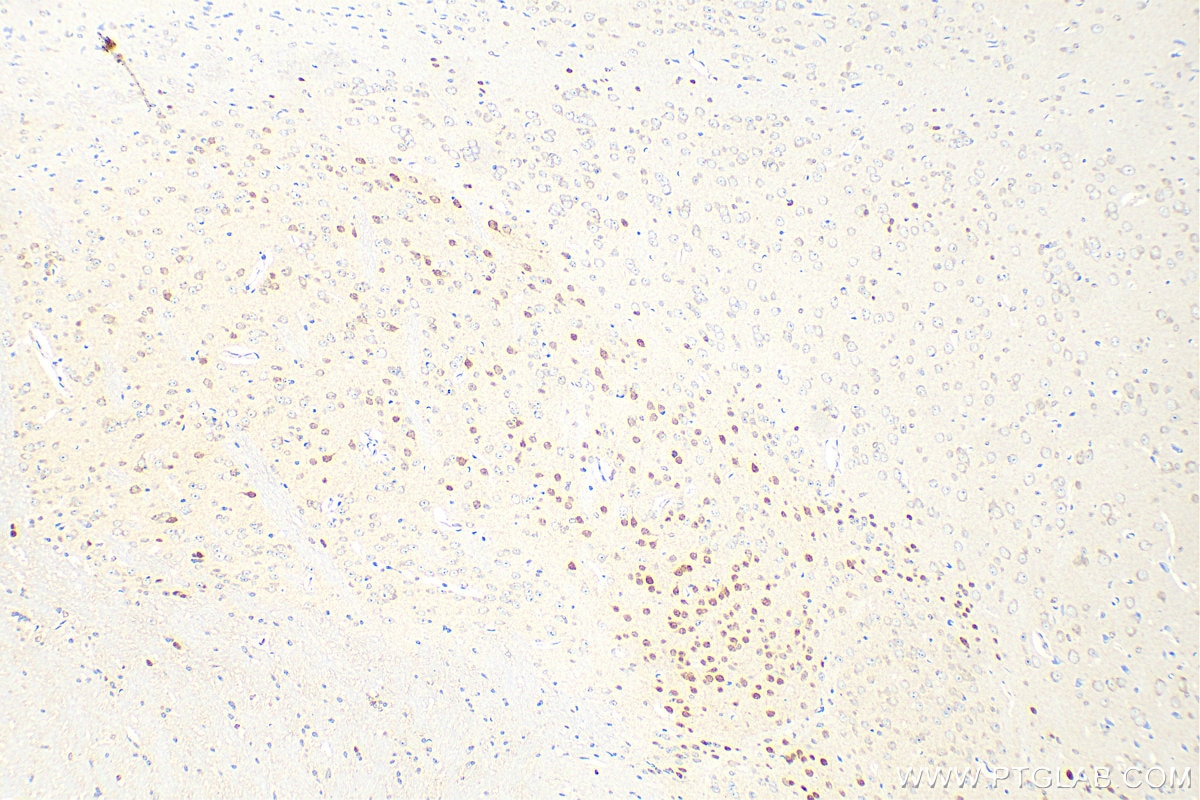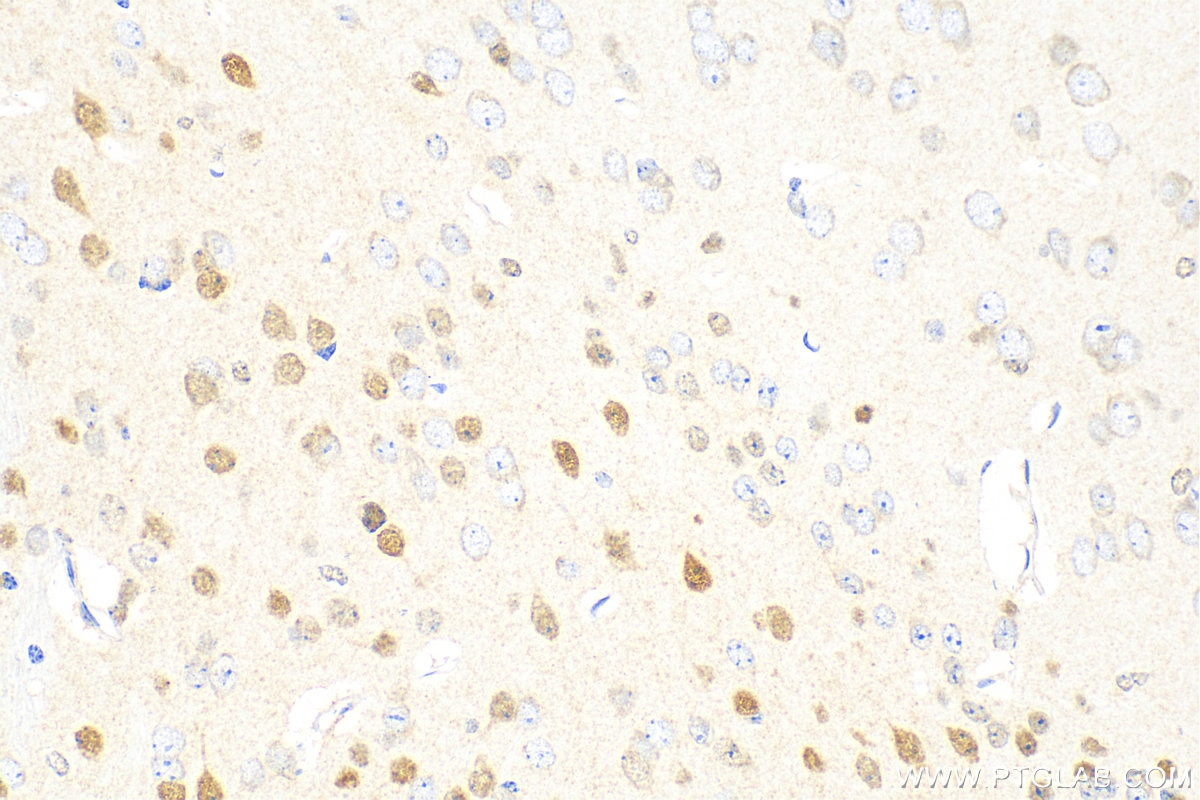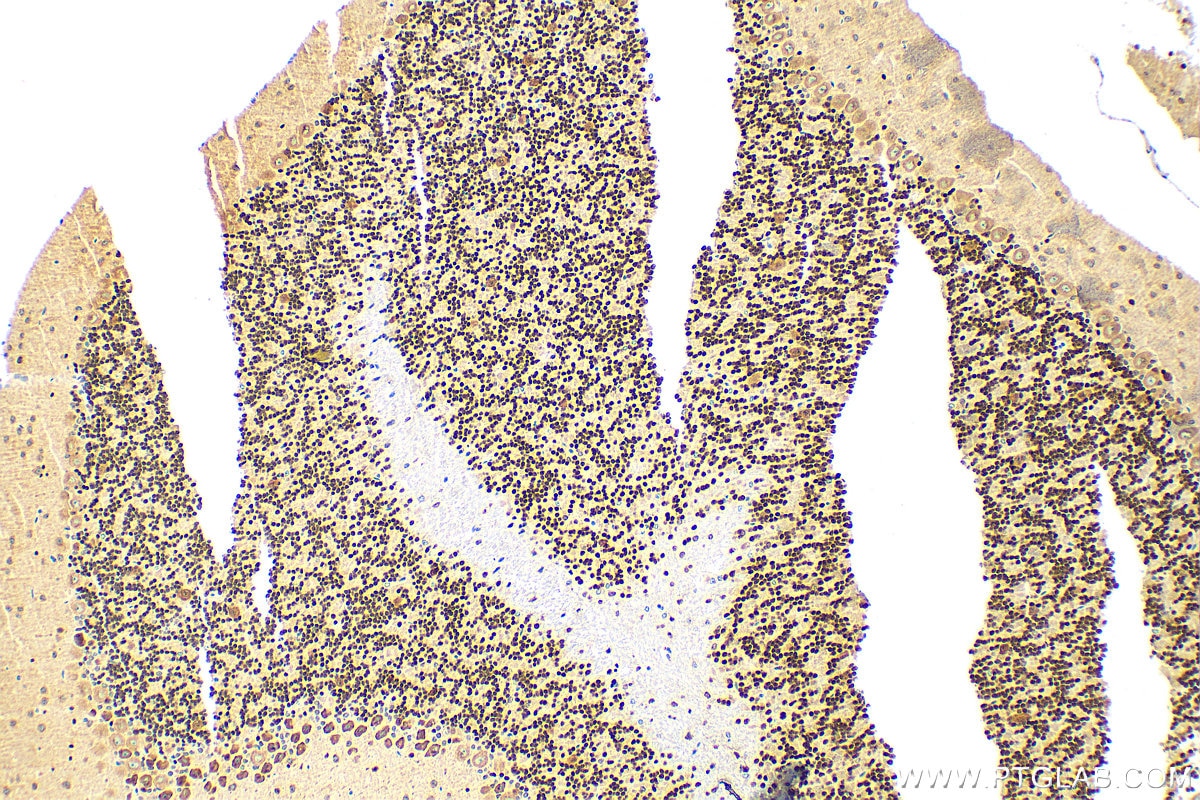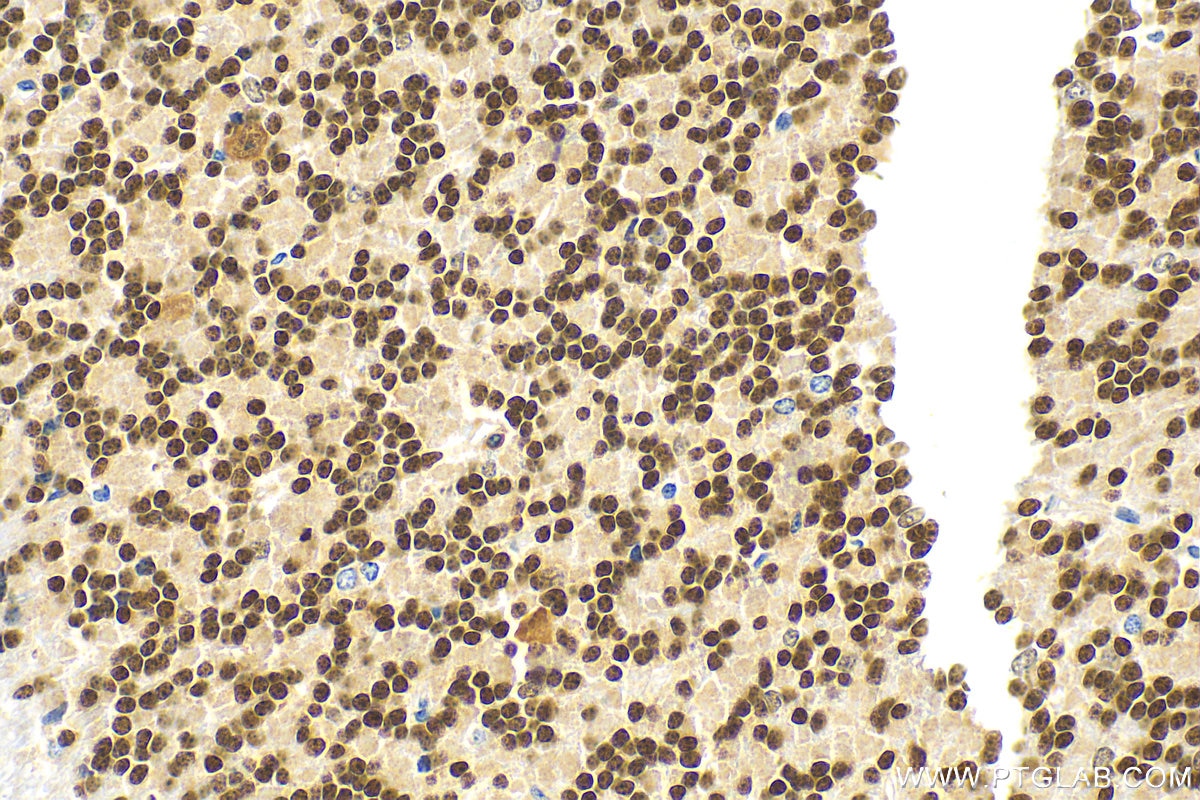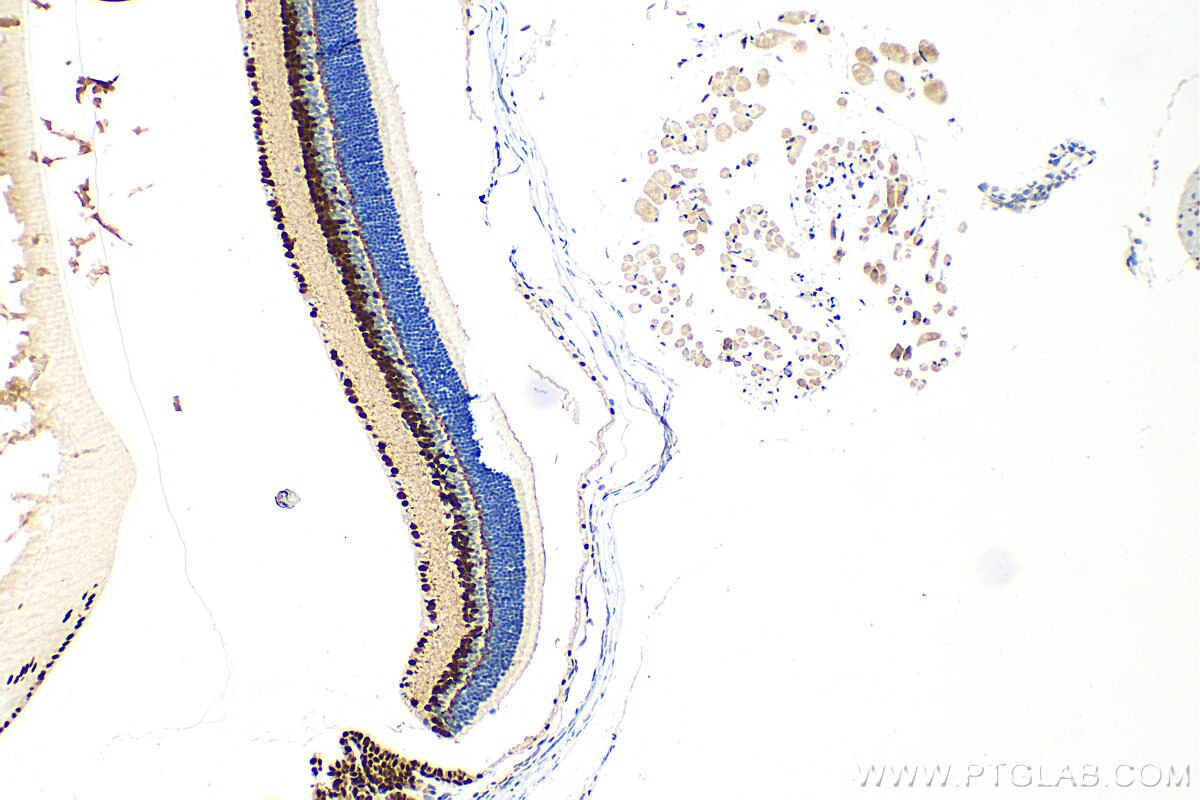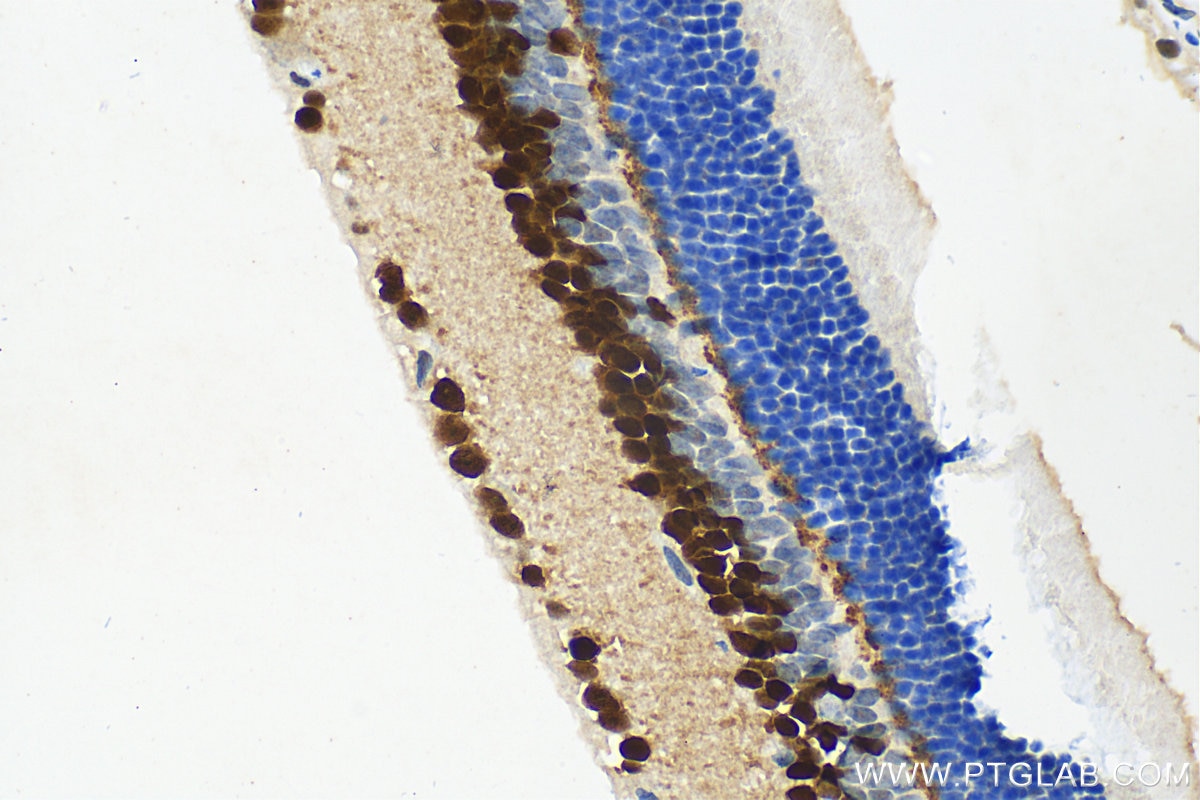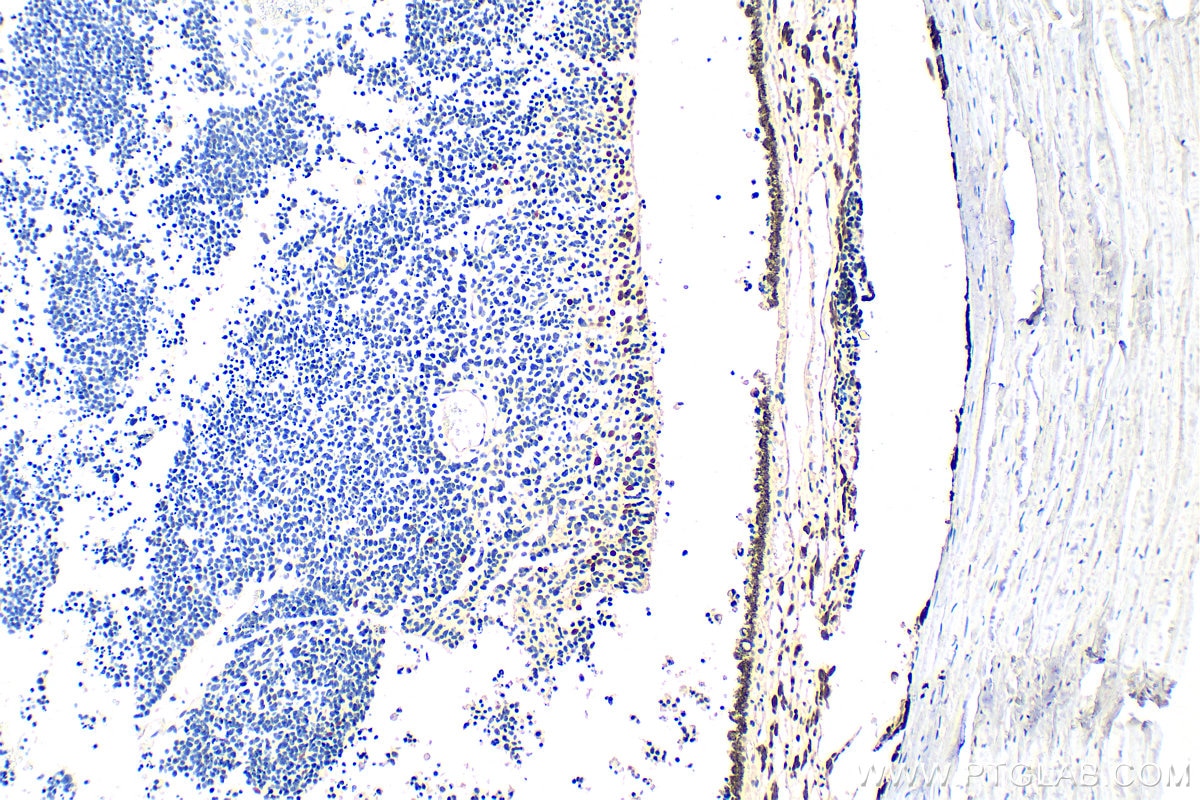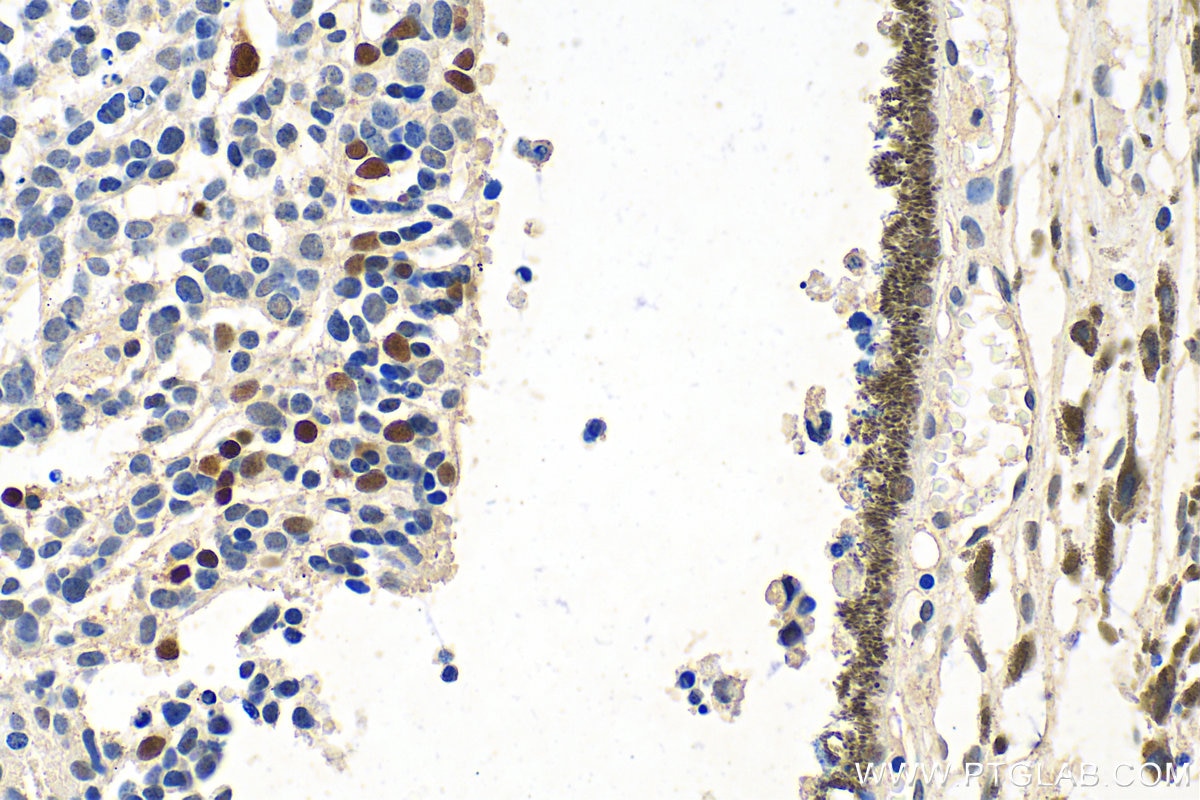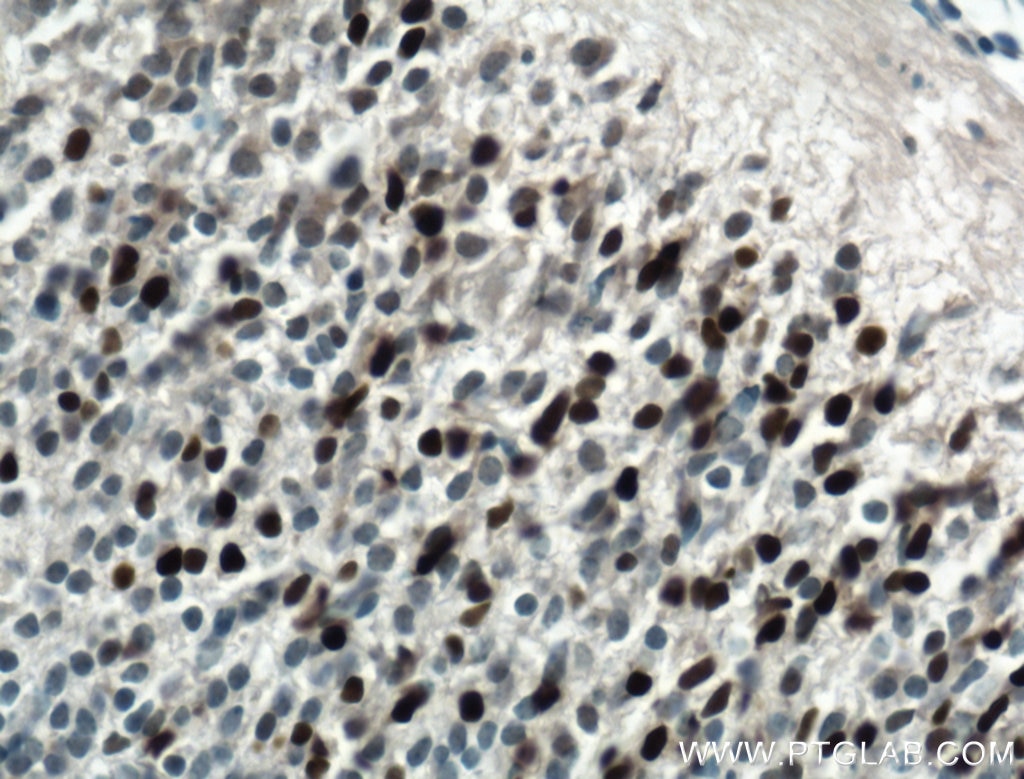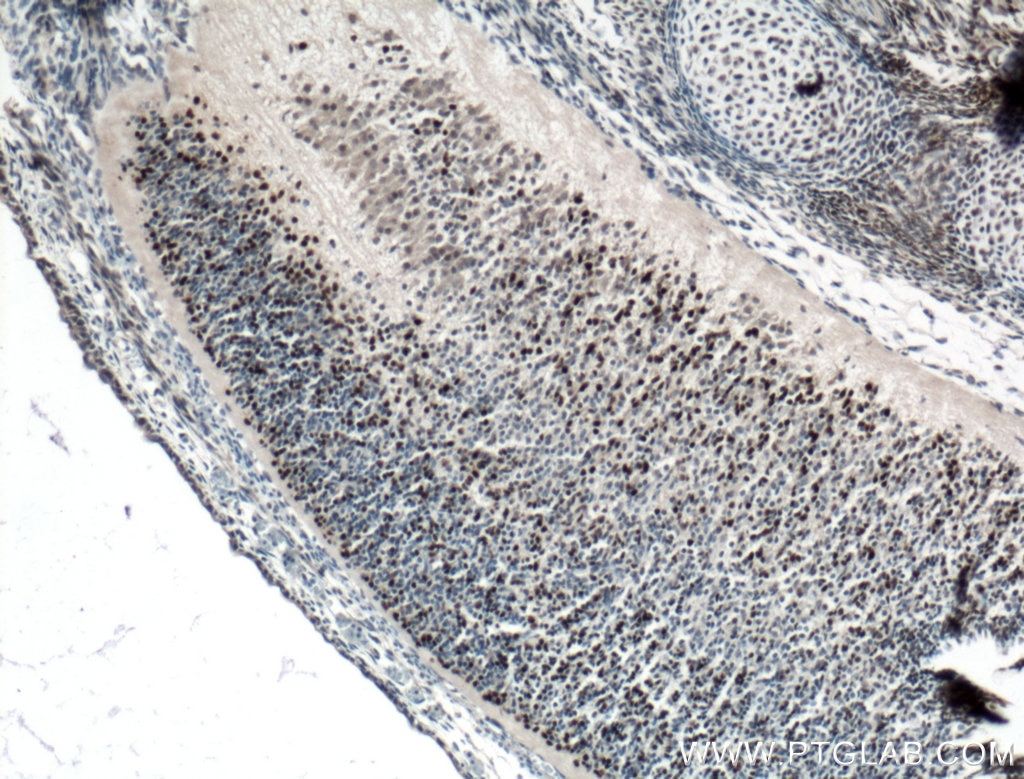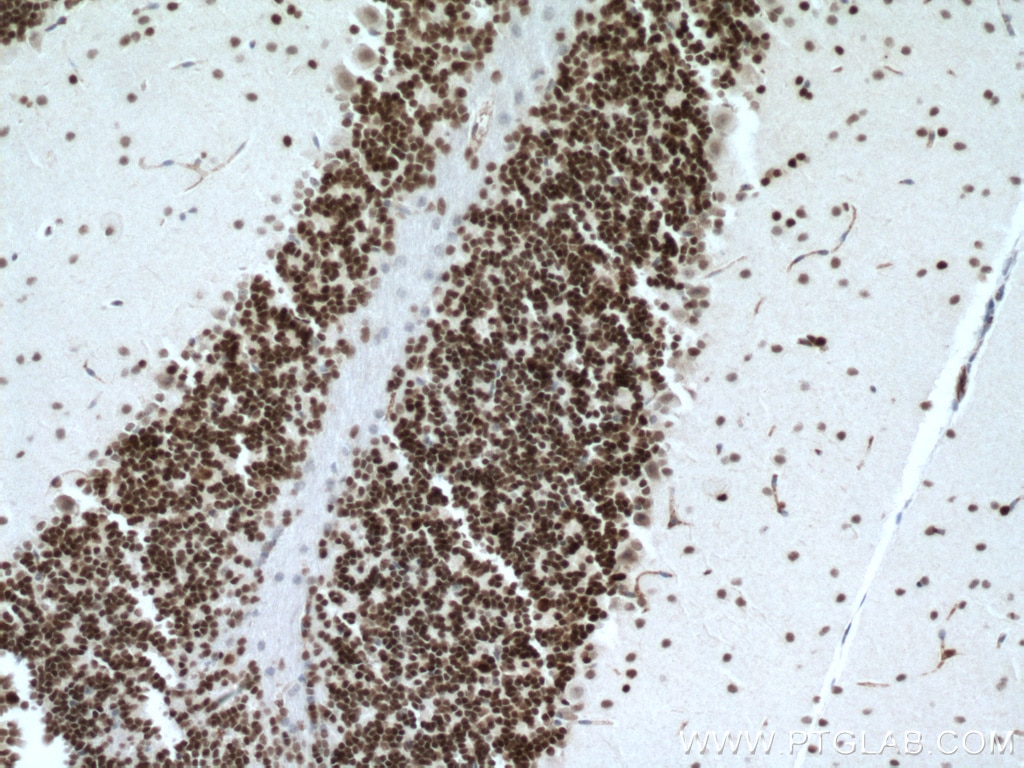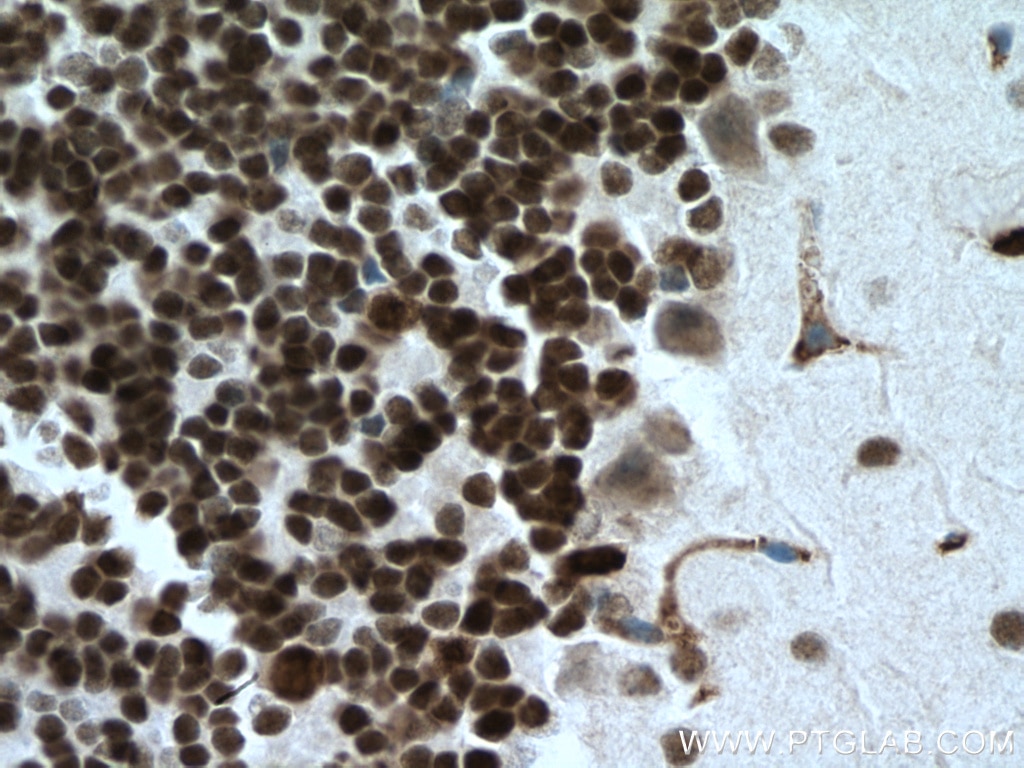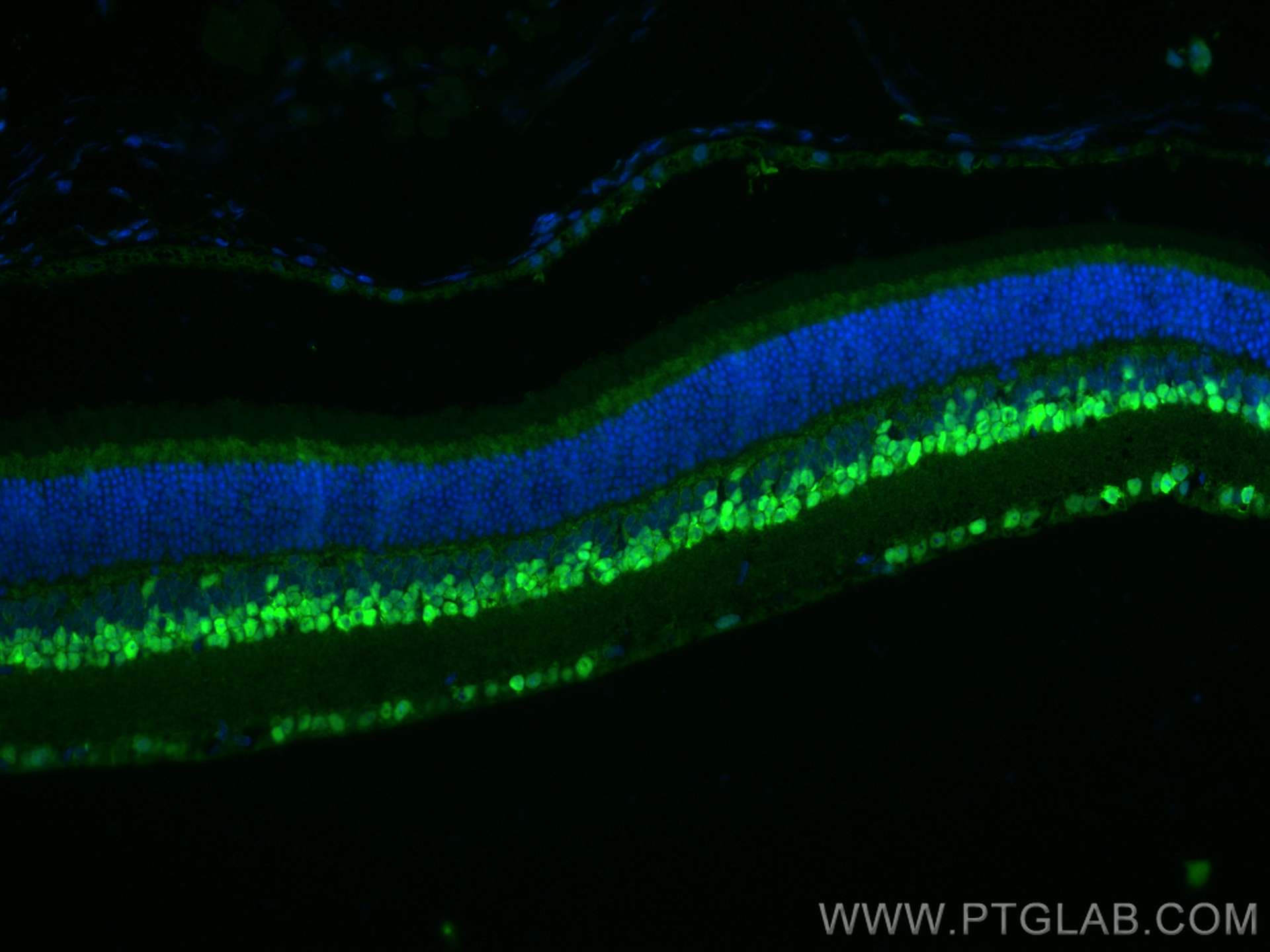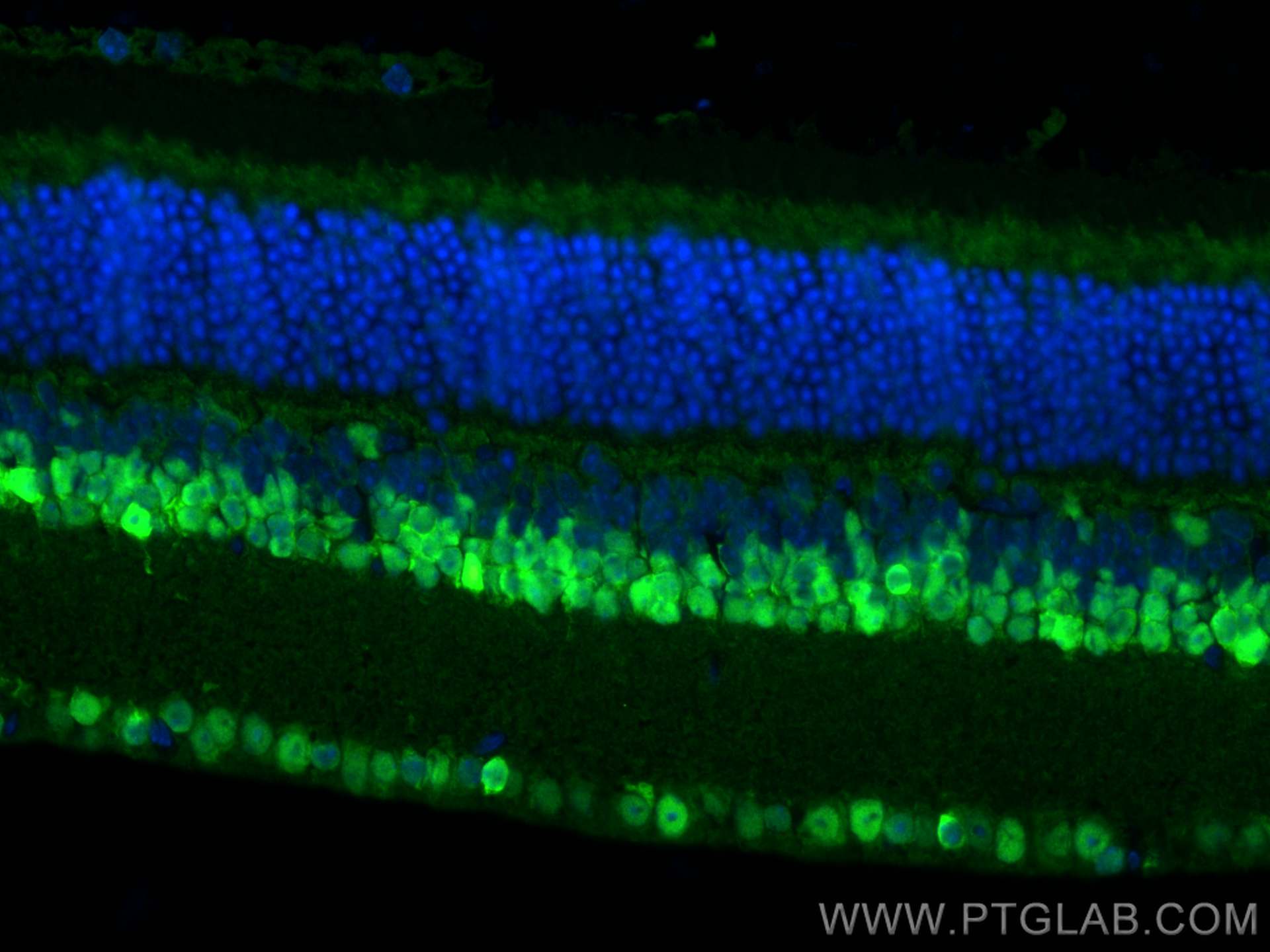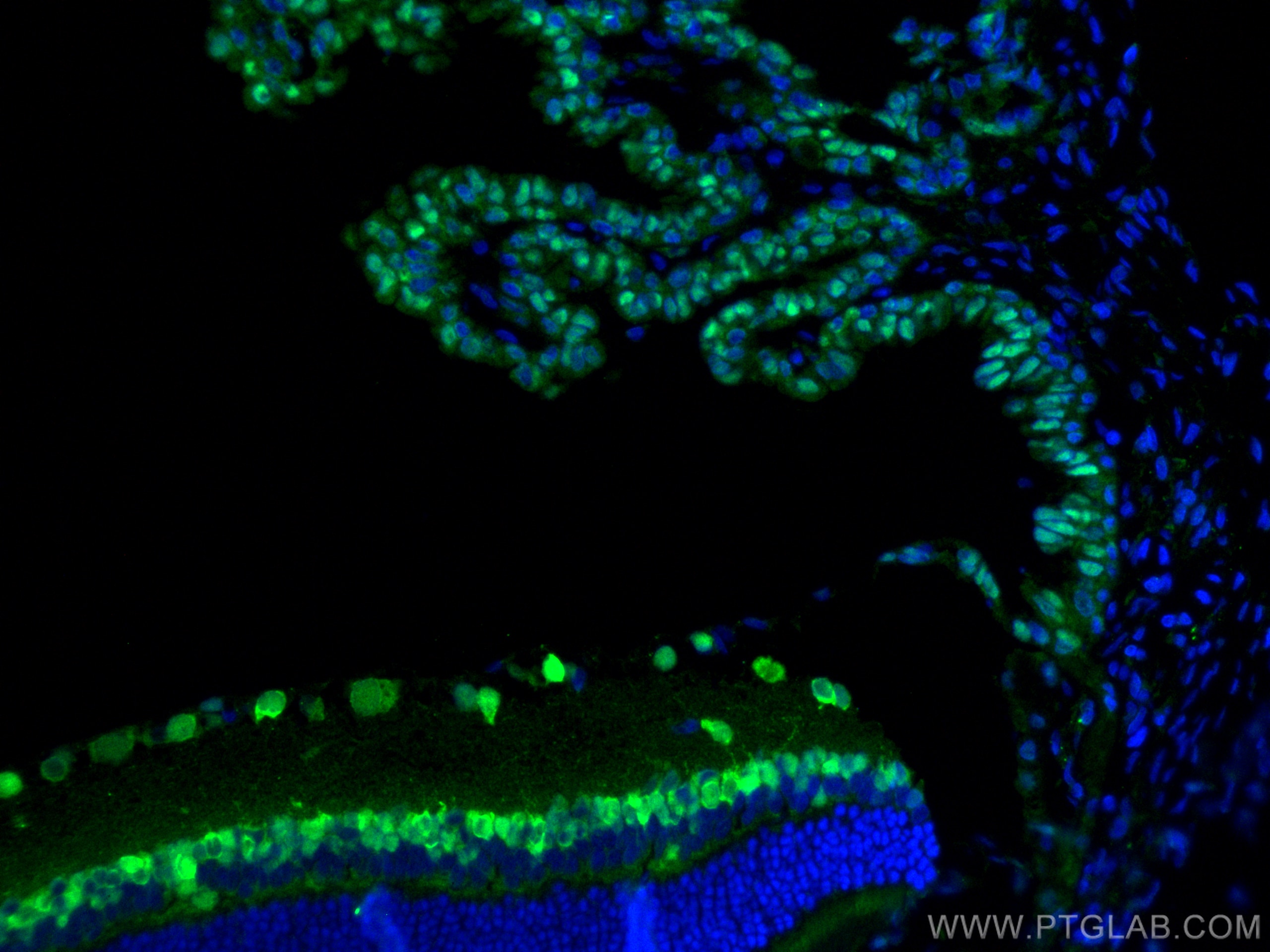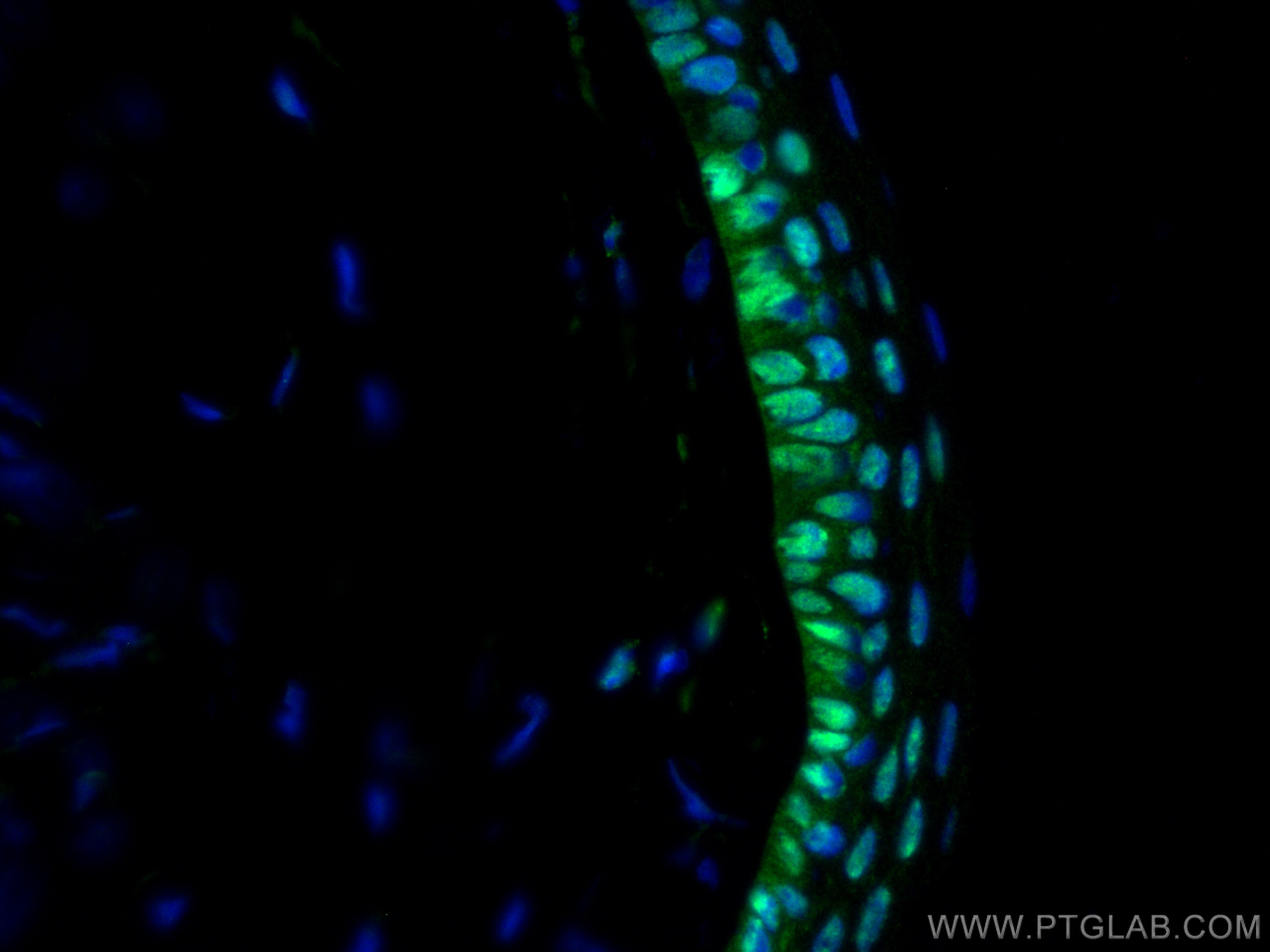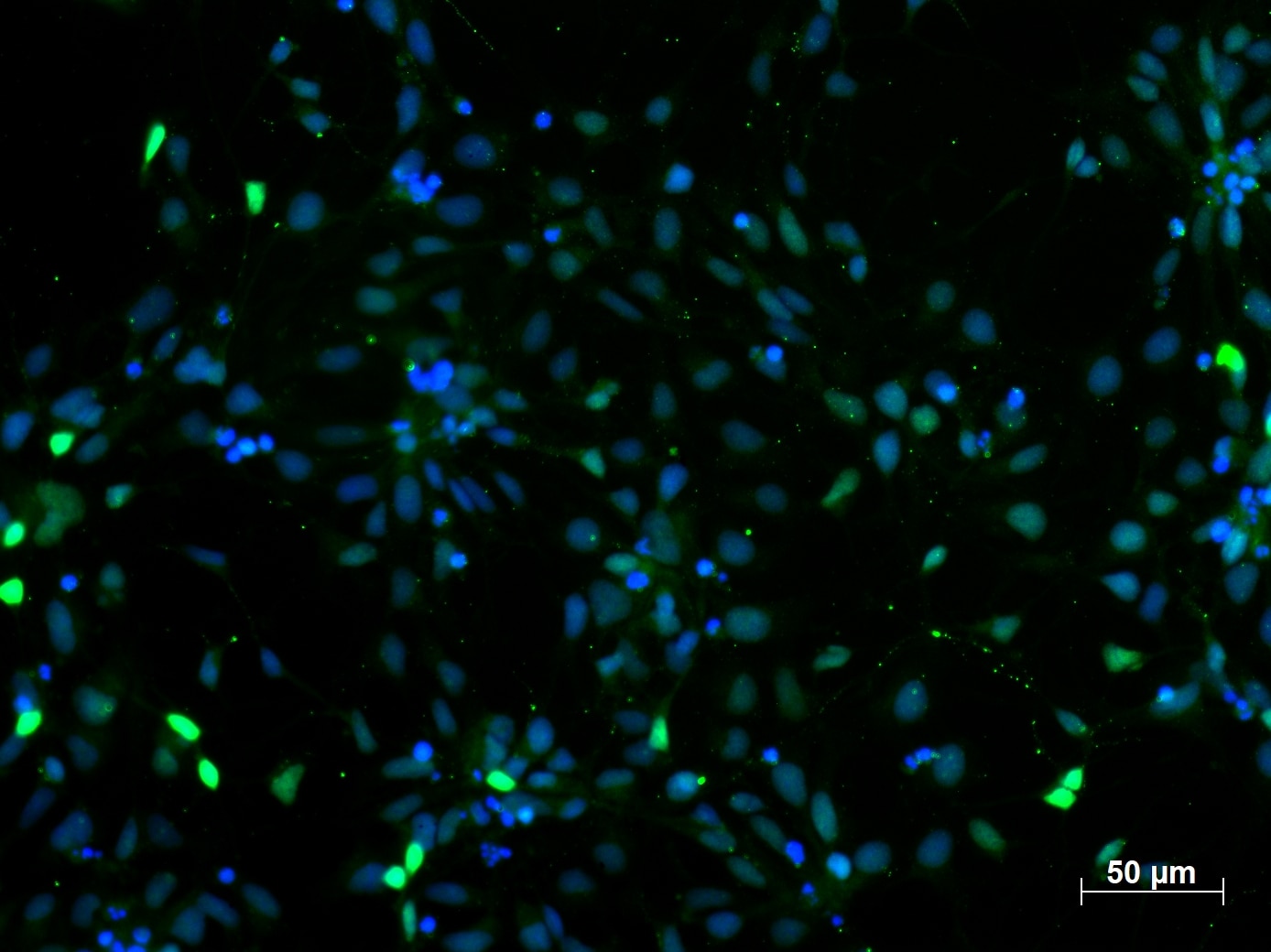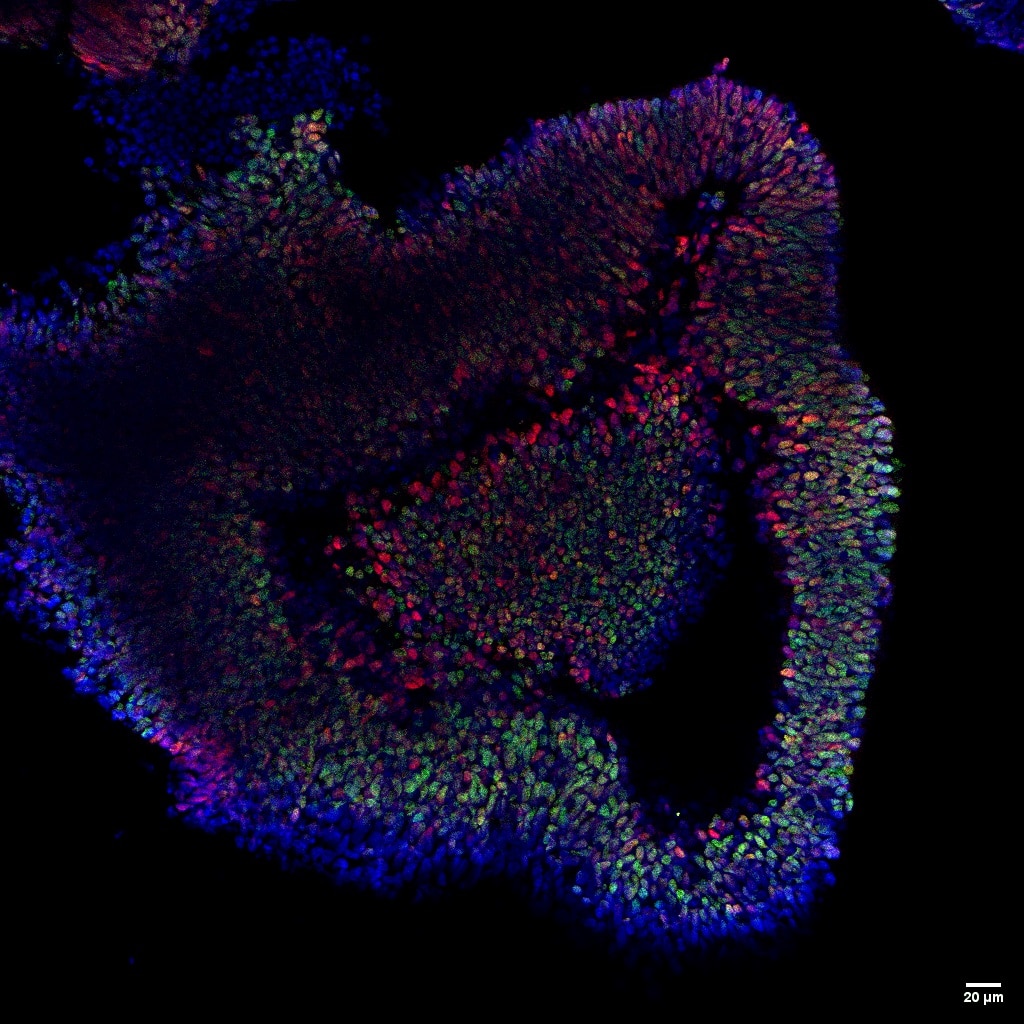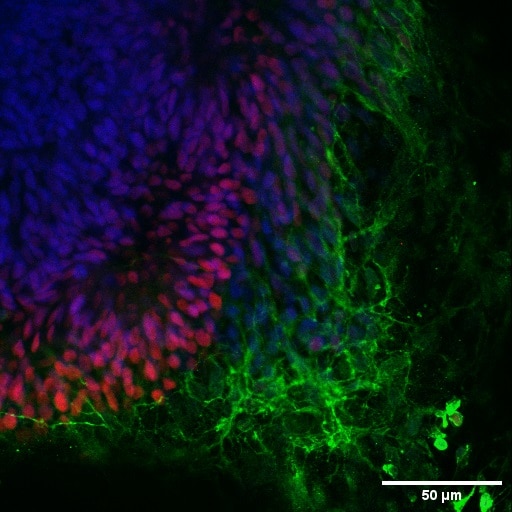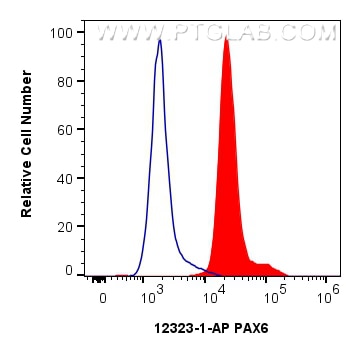- Featured Product
- KD/KO Validated
PAX6 Polyklonaler Antikörper
PAX6 Polyklonal Antikörper für WB, IHC, IF, IF-P, FC (Intra), ELISA
Wirt / Isotyp
Kaninchen / IgG
Getestete Reaktivität
human, Maus, Ratte und mehr (2)
Anwendung
WB, IHC, IF, IF-P, FC (Intra), ELISA
Konjugation
Unkonjugiert
Kat-Nr. : 12323-1-AP
Synonyme
Geprüfte Anwendungen
| Erfolgreiche Detektion in WB | Y79-Zellen, Mausembryogewebe, Rattenhirngewebe |
| Erfolgreiche Detektion in IHC | Ratten-Augengewebe, humanes Retinoblastom-Gewebe, Maushirngewebe, Maus-Cerebellum-Gewebe, Mausembryogewebe, Maus-Augengewebe Hinweis: Antigendemaskierung mit TE-Puffer pH 9,0 empfohlen. (*) Wahlweise kann die Antigendemaskierung auch mit Citratpuffer pH 6,0 erfolgen. |
| Erfolgreiche Detektion in IF-P | Maus-Augengewebe, Ratten-Augengewebe |
| Erfolgreiche Detektion in IF | Retinal organoids, iPS-Zellen |
| Erfolgreiche Detektion in FC (Intra) | SH-SY5Y-Zellen |
Empfohlene Verdünnung
| Anwendung | Verdünnung |
|---|---|
| Western Blot (WB) | WB : 1:500-1:3000 |
| Immunhistochemie (IHC) | IHC : 1:1000-1:4000 |
| Immunfluoreszenz (IF)-P | IF-P : 1:50-1:500 |
| Immunfluoreszenz (IF) | IF : 1:10-1:100 |
| Durchflusszytometrie (FC) (INTRA) | FC (INTRA) : 0.40 ug per 10^6 cells in a 100 µl suspension |
| It is recommended that this reagent should be titrated in each testing system to obtain optimal results. | |
| Sample-dependent, check data in validation data gallery | |
Veröffentlichte Anwendungen
| KD/KO | See 1 publications below |
| WB | See 18 publications below |
| IHC | See 7 publications below |
| IF | See 54 publications below |
Produktinformation
12323-1-AP bindet in WB, IHC, IF, IF-P, FC (Intra), ELISA PAX6 und zeigt Reaktivität mit human, Maus, Ratten
| Getestete Reaktivität | human, Maus, Ratte |
| In Publikationen genannte Reaktivität | human, Affe, Maus, Ratte, Zebrafisch |
| Wirt / Isotyp | Kaninchen / IgG |
| Klonalität | Polyklonal |
| Typ | Antikörper |
| Immunogen | PAX6 fusion protein Ag2984 |
| Vollständiger Name | paired box 6 |
| Berechnetes Molekulargewicht | 47 kDa |
| Beobachtetes Molekulargewicht | 47 kDa |
| GenBank-Zugangsnummer | BC011953 |
| Gene symbol | PAX6 |
| Gene ID (NCBI) | 5080 |
| Konjugation | Unkonjugiert |
| Form | Liquid |
| Reinigungsmethode | Antigen-Affinitätsreinigung |
| Lagerungspuffer | PBS with 0.02% sodium azide and 50% glycerol |
| Lagerungsbedingungen | Bei -20°C lagern. Nach dem Versand ein Jahr lang stabil Aliquotieren ist bei -20oC Lagerung nicht notwendig. 20ul Größen enthalten 0,1% BSA. |
Hintergrundinformationen
Background
Paired-box 6 (Pax6) is a highly conserved nuclear transcription factor that is key in neural tissue development, particularly eye morphogenesis.
What is the molecular weight of Pax6?
46.6 kDa. Pax6 is composed of 422 amino acids and contains a paired domain and a homeodomain.
What is the role of Pax6 in development?
In embryos, Pax6 is expressed in the developing central nervous system (CNS), eye, nose, and also in the pancreas. As a transcription factor, Pax6 is one of the earliest genes expressed in the eye and regulates the expression of many genes required for retinal and olfactory development (PMID: 10461206). The broad expression of Pax6 in the neuroectoderm, which develops to the CNS, makes it a useful marker for neural stem cells (PMID: 20621053).
The homology of Pax6 to the Drosophila gene eyeless and the mouse gene Small eye highlights its importance across a wide spectrum of organisms. In model organisms such as flies or mice, a dramatic phenotype can be seen. Mutations in eyeless lead to ectopic eye development and mice with heterozygote small eye mutations do not develop eyes or nasal cavities, and homozygote small eye mice do not survive (PMID: 7892602; PMID 8875254).
What is the role of Pax6 in eye disease?
Due to its key role as a master regulator in eye development, mutations in Pax6 have been associated with many different eye diseases. In humans, premature stop signals that lead to the production of a truncated protein have been found to cause aniridia, the absence of an iris (PMID: 19898691). Single amino acid mutations in Pax6 may lead to Peters' anomaly, which causes thinning and clouding of the cornea (PMID: 8162071).
Protokolle
| PRODUKTSPEZIFISCHE PROTOKOLLE | |
|---|---|
| WB protocol for PAX6 antibody 12323-1-AP | Protokoll herunterladen |
| IHC protocol for PAX6 antibody 12323-1-AP | Protokoll herunterladenl |
| IF protocol for PAX6 antibody 12323-1-AP | Protokoll herunterladen |
| STANDARD-PROTOKOLLE | |
|---|---|
| Klicken Sie hier, um unsere Standardprotokolle anzuzeigen |
Publikationen
| Species | Application | Title |
|---|---|---|
Cell Stem Cell Engineering Genetic Predisposition in Human Neuroepithelial Stem Cells Recapitulates Medulloblastoma Tumorigenesis. | ||
Cell Stem Cell Chemical-induced chromatin remodeling reprograms mouse ESCs to totipotent-like stem cells. | ||
Cell Metab Mitochondrial Dynamics Is Critical for the Full Pluripotency and Embryonic Developmental Potential of Pluripotent Stem Cells. | ||
Nat Commun Reliability of high-quantity human brain organoids for modeling microcephaly, glioma invasion and drug screening | ||
Cell Rep Med End binding-3 inhibitor activates regenerative program in age-related macular degeneration | ||
Rezensionen
The reviews below have been submitted by verified Proteintech customers who received an incentive for providing their feedback.
FH Kedar (Verified Customer) (08-28-2025) | Works well with NPCs and neurons derived from iPSCs
|
FH Christoffer (Verified Customer) (03-03-2025) | Works on adult mouse retina embedded in paraffin as well as cryo embedded postnatal (p7) mouse tissue.
|
FH Ryszard (Verified Customer) (01-19-2024) | Antibody Pax-6 Rabbit works very well on whole mount mESC-derived cerebral organoids.
 |
FH Julie (Verified Customer) (01-18-2021) | This antibody works very well for immunofluorescence on human brain.
|
FH Rachel (Verified Customer) (02-01-2019) | Worked well and Proteintech employees were very helpful during the ordering process.
|
